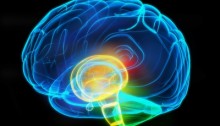Neuroscience of Need: Understanding the Addicted Mind
In the past 10 or 15 years the basis of addiction research has shifted its perception on addiction and now focuses more on the maladaptive form of learning. Results have showed that addiction is not quickly unlearned. Addiction is associated with changes in the brain. Due to the changes, relapse is most likely going to occur and treatments are longer-term. Rob Malenka looked at animal models to extrapolate to humans. Sam McClure found that the brain changes that occurred in rats are likely to take place in humans as well.
Scientists are now viewing addiction the same as a chronic disease and are using similar treatment methods. Researchers have found that addictive drugs mimic natural desires and rewards such as sex and food. These types of desires are what give us enjoyment. What makes a drug so addicting? Drugs cause the release of dopamine, which is a key neurotransmitter responsible for experiencing pleasure. The more of a substance the person consumes, the more dopamine is released and the more pleasure they feel.
Studies show that only a fraction of people who experiment with a drug get addicted. However, no studies have shown a specific “addictive personality”. However, there are certain risk factors including stress, poor social support networks, genetics, and a sense of having nothing to lose. One major risk factor is the age at which the person started using the substance. The younger a person is, the more likely it is that a person is to become addicted to a substance. In the end, the biggest risk factor is the time of initial use of the drug.
To read more about the Neuroscience of Need. Click here.


0 Comments